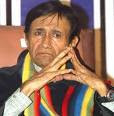When reading up about a home loan, some time back, I noticed one common piece of advice all around; that a housing loan was a long term product and ought not to make decisions and choices merely by looking at the economic climate of the time. Over the 15-20 time period horizon over which a home loan usually operates, lots of things would happen; politically and economically.
And sure enough, in the couple of years that have passed by, Home loans first kept going down and every body wanted a floating rate of interest , then they started going up and up and up , and now they seem to be coming down again, albeit, a lot slower than many of us would have liked.
Some thing that lasts longer than houses and flats or at least is meant to traditionally are marriages and it seems that they are guided in the same manner insofar as the marriage alliance market is concerned. According to a report in the Hindustan Times, the current economic meltdown has not spared the matrimonial market and the “Dowry Index”. According to the report, the most sought after husbands in the country are no longer the folks in the IT sector; the tide it would seems has turned against them and the eternal favorites – the civil services are back in the reckoning at the top of the pile.
Some thing that is unfortunate though is that the insidious business of giving dowry is not going away with the more “modern” professions, only their positions in the hierarchy is shifting. One could have had the right to expect that the newer professions would come unencumbered with the baggage that some of the older professions have and would be socially progressive and gender sensitive. But that has not unfortunately happened. Like any newly listed company at the Stock Exchange, the emerging professions have found their place in the sun and have acquired a value that they now demand on the matrimonial market.
Sadly though the fact that the newly created professions are gender neutral in many ways hasn’t done any thing to dent the pernicious dowry system. Sangeeta Gupta, VP, Nasscom, had said in 205 that in the software industry, the male to female ratio is 76:24. However, by 2007, this ratio was likely to be 65:35. The trend is likely to continue and in fact gain momentum. But IT industry sources have also claimed the larger numbers of women in the sector not withstanding “gender relations have been largely ignored in studies of offshore software development. Much of the labour process is highly labour-intensive and is seen to breed a ‘masculine culture‘ as technical skill is intimately entwined with masculinity.”
What makes the story particularly unpalatable is the fact that in the older and more “established” professions, women were typically not expected to join in as employees – the Railways, the Armed Forces and the old school corporate would be a good example. But in the “new generation” professions, no such legacy exists and women and men work and are employed on relatively level playing fields. But that sadly has done nothing for the dowry system which carries on unaffected with the dowry index going up and down incorporating and imitating the vagaries of the economy into the unrelenting demands of society.

























